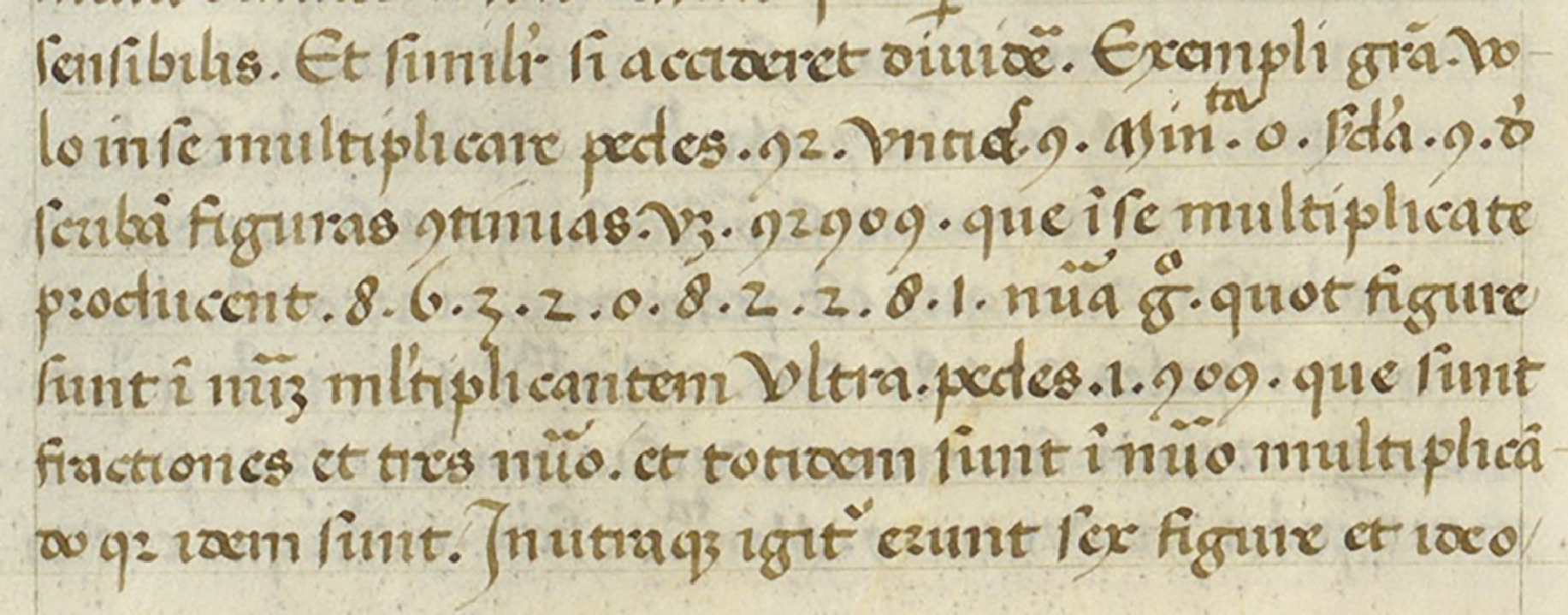Some inventions are so ubiquitous that it’s easy to forget someone had to come up with them in the first place. Take the decimal point, for example. There was a time when, if we wanted to write a number between zero and one, pretty much our only option was to use a fraction. At some point, however, that all changed – and it seems that point might have been about a century and a half earlier than we previously thought.
“The earliest known appearance of the decimal point was in the interpolation column of a sine table in Christopher Clavius’s Astrolabium (1593),” writes Glen Van Brummelen, a Professor of Mathematical Sciences at Trinity Western University and historian of mathematics and astronomy, in a new paper investigating the history of the minute symbol.
“But this is a curious place to introduce such a significant new idea,” he argues, “and the fact that Clavius never took advantage of it in his own later writings has remained unexplained.”
Well, as it turns out, there’s a simple solution to these conundrums: Clavius wasn’t the one who came up with the decimal point at all. “We trace Clavius’s use of decimal fractional numeration and the decimal point back to the work of Giovanni Bianchini (1440s),” van Brummelen explains, “whose decimal system was a distinguishing feature of his calculations in spherical astronomy and metrology.”
So who was this mysterious Bianchini, who gave us so fundamental a part of our interpretation of the world? Well, don’t worry if you don’t recall him from your math textbooks: he wasn’t actually much of a mathematician at all, but a Venetian merchant and administrator for the locally powerful d’Este family.
Nevertheless, he evidently had some interest in the subject – as shown by a short paper on geometry he seems to have penned at some point in the 1440s. In this text, he used an instrument called a biffa to “[invent] an equivalent to the metric system,” van Brummelen writes:
… let the line of any foot (pedis) be divided into ten equal parts bounded by lines of smaller length than the lines bounding the feet; these divisions are called untie. And also untie are divided in ten parts and designated also by smaller lines or by points; these divisions are called minuta. And also the minuta are divided in ten parts, if it can be done, which are in congruent intervals; these divisions are named secunda… And note that these divisions are always bounded in tens by tens, so that multiplications and divisions are to be made by them, by the doctrine that I will teach below, will work more easily.
If that doesn’t look too groundbreaking to you, don’t worry: it’s not, really. As van Brummelen points out, Bianchini was far from the first person ever to use decimal expansion, period. “In China, the early emergence of decimal fractions led to a continuous tradition from the medieval period,” he notes; “[the] mid-10th century Damascene scholar Abū al-Ḥasan al-Uqlīdisī […] use[d] a short vertical notch to indicate the units place in a string of decimal digits,” and plenty of other scholars around the world have independently come up with equivalent notational hacks and shortcuts at various points in history.
But what marks Bianchini’s treatise as special is the particular notation he chose: a little dot, separating out the whole units from the fractional part.
“The first time that Bianchini refers to a length requiring more than one unit of measurement, he names each unit as follows: ‘sitque ipsa distantia pedes .0. untie .7. minuta .4. et secunda .6.’”, van Brummelen writes.
“But when he turns to multiplication, division, and the extraction of roots, the metrology disappears,” he continues. Bianchini “abbreviates the representation further, for instance writing ‘.746.’, which he notes can be read easily as 746 secunda. At one point he squares the distance 92 pedes, 9 untia, 0 minuta, 9 secunda. He writes this quantity as ‘.92909.’”

The smoking gun. From Bianchini’s Compositio instrumenti.
It’s a smart breakthrough, but it wouldn’t be much more than a footnote in the history books had it not been noticed by a couple of very influential mathematician astronomers: Clavius himself, and Johannes Müller von Königsberg – better known as Regiomontanus.
Regiomontanus “learned from Bianchini, adopted a number of the latter’s innovations, and in some ways extended paradigms that Bianchini had established,” writes van Brummelen. Meanwhile, “Clavius’s introduction of the decimal point in the curious context of an interpolation column in a Sine table, and the fact that he never used it again, is simply explained.”
Clavius “had access to Bianchini’s Sine table,” van Brummelen concludes, “and he copied the structure of that table in his own work.”
The paper is published in the journal Historia Mathematica.
Source Link: This Very Important Mathematical Point Is Way Older Than We Thought